Samsung Galaxy S9+ Review
In the Android world, in that location is no bigger event than Samsung'southward yearly launch of their latest Galaxy S devices. Information technology is also one of the earliest on the year cycle with the Milky way S9 and Milky way S9+ arriving at Mobile World Congress in belatedly February. Both devices present iterative updates for 2022, with upgrades on most fronts along with some smashing feature additions as well equally more gimmicky ones.
This review focuses on the larger of the 2 devices, the Samsung Galaxy S9+. Most of the hardware within the S9+ is the aforementioned as the S9, with the exception of the larger six.ii-inch display (versus 5.8" on the S9), the dual rear photographic camera solution, and a larger battery.
As with previous Milky way S handsets, at that place are 2 variants of the S9+ for different markets. The U.s., Japan and China become a Qualcomm Snapdragon 845 inside, while the residue of the world gets Samsung's latest Exynos 9810. Usually there'due south been little difference betwixt the ii chips -- our review unit of measurement came with the Exynos SoC inside -- nevertheless information technology appears that's not the example this twelvemonth with reports about significant differences in functioning and battery life between the two, on favor of the Snapdragon version.
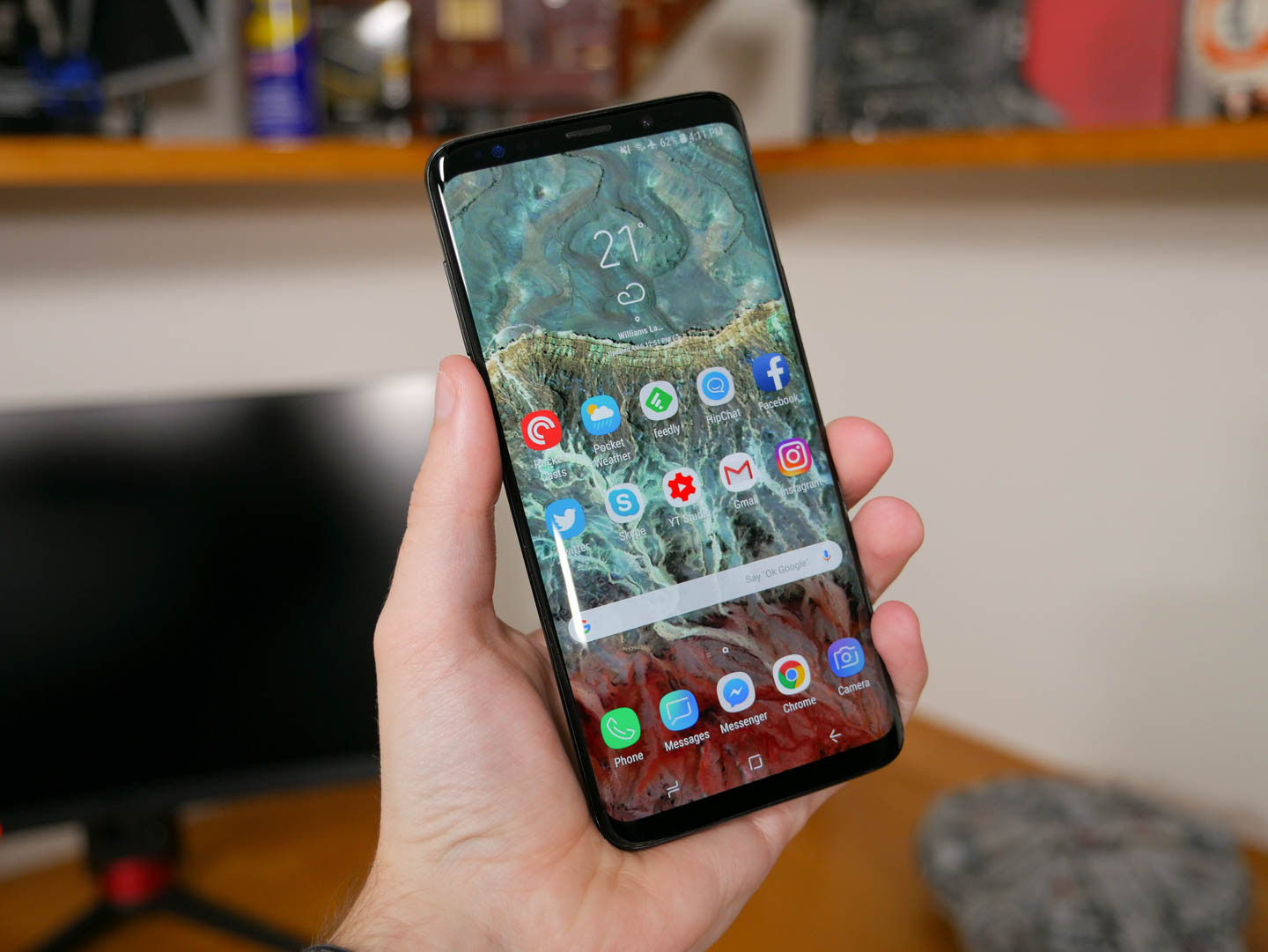
The Milky way S9+ sports a 6.two-inch 2960 x 1440 Super AMOLED display, 6GB of RAM with storage ranging from 64 to 256 GB, a 3500 mAh battery, a rear fingerprint scanner, USB-C, a iii.5mm headphone jack and more. The photographic camera system is a 12-megapixel principal sensor with a dual aperture lens, paired with a 12-megapixel telephoto zoom camera, both with optical image stabilization.
From a design perspective, Samsung hasn't made whatever significant changes with the Galaxy S9+, for better or worse. The design still sees glass on both the forepart and rear, with a metallic edge around all sides. On the front and back the display and glass curve in to the edges. And like with the Galaxy S8, the 18.v:9 attribute ratio display occupies a significant portion of the front panel without the need for a ridiculous notch.
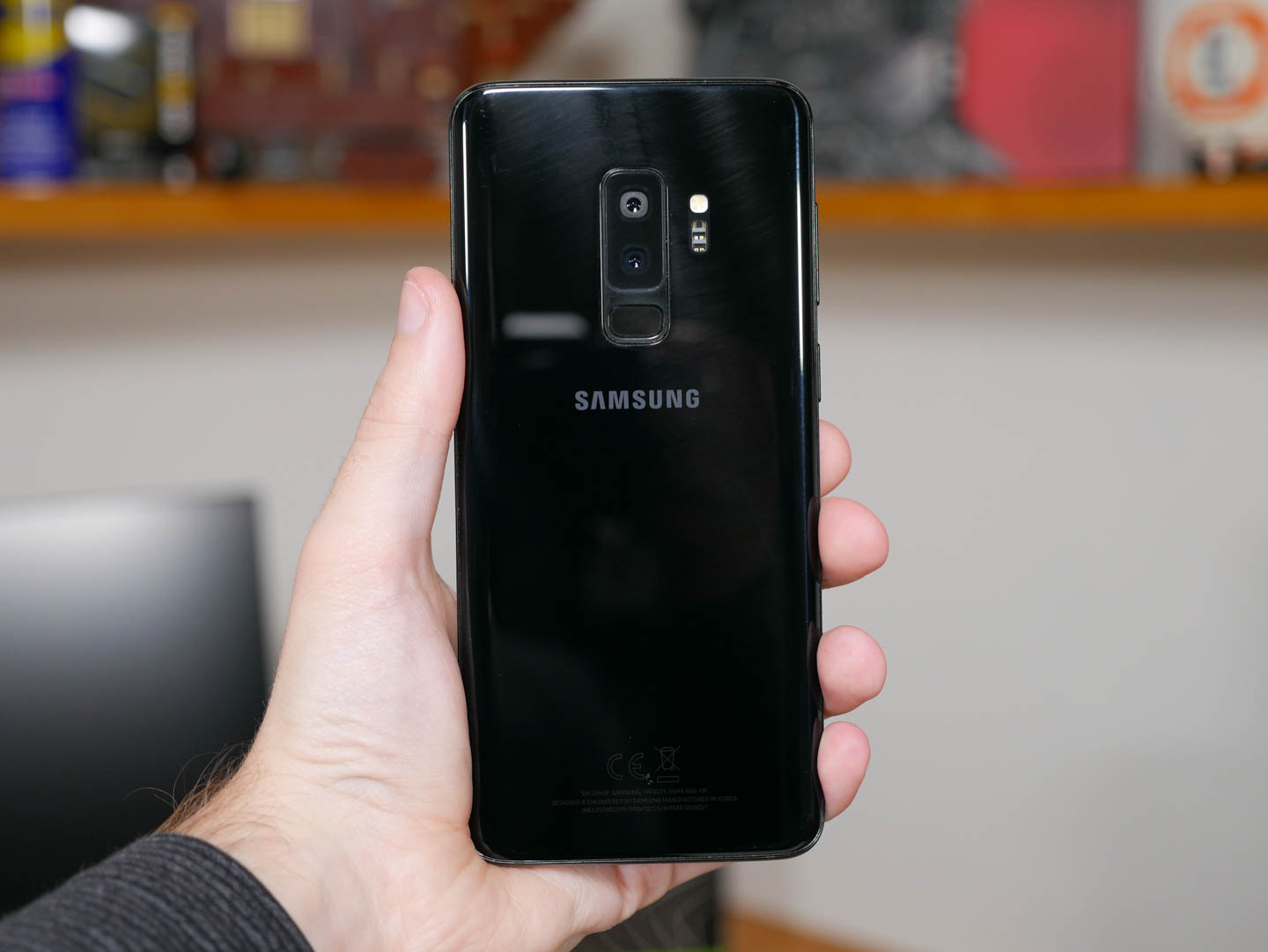
Samsung has come a long way on improving their telephone designs and information technology's made some of the best handsets on the market for the past few years. The Galaxy S9+ is a cute handset, the curved drinking glass looks fantastic, the metal edges feel great, and there's a well-nigh seamless high quality construction.
Withal the slipperiness of the Milky way S9+ remains a concern, as information technology did with the Galaxy S8. Having glass on both sides and such thin metal edges makes information technology hard to get a house grip on this handset at times, and if you identify the device on whatever fifty-fifty remotely smooth surface, the Milky way S9+ can slide effectually with ease. There hasn't been a lot of thought to improving the grip, with Samsung instead standing to favour dazzler over function.
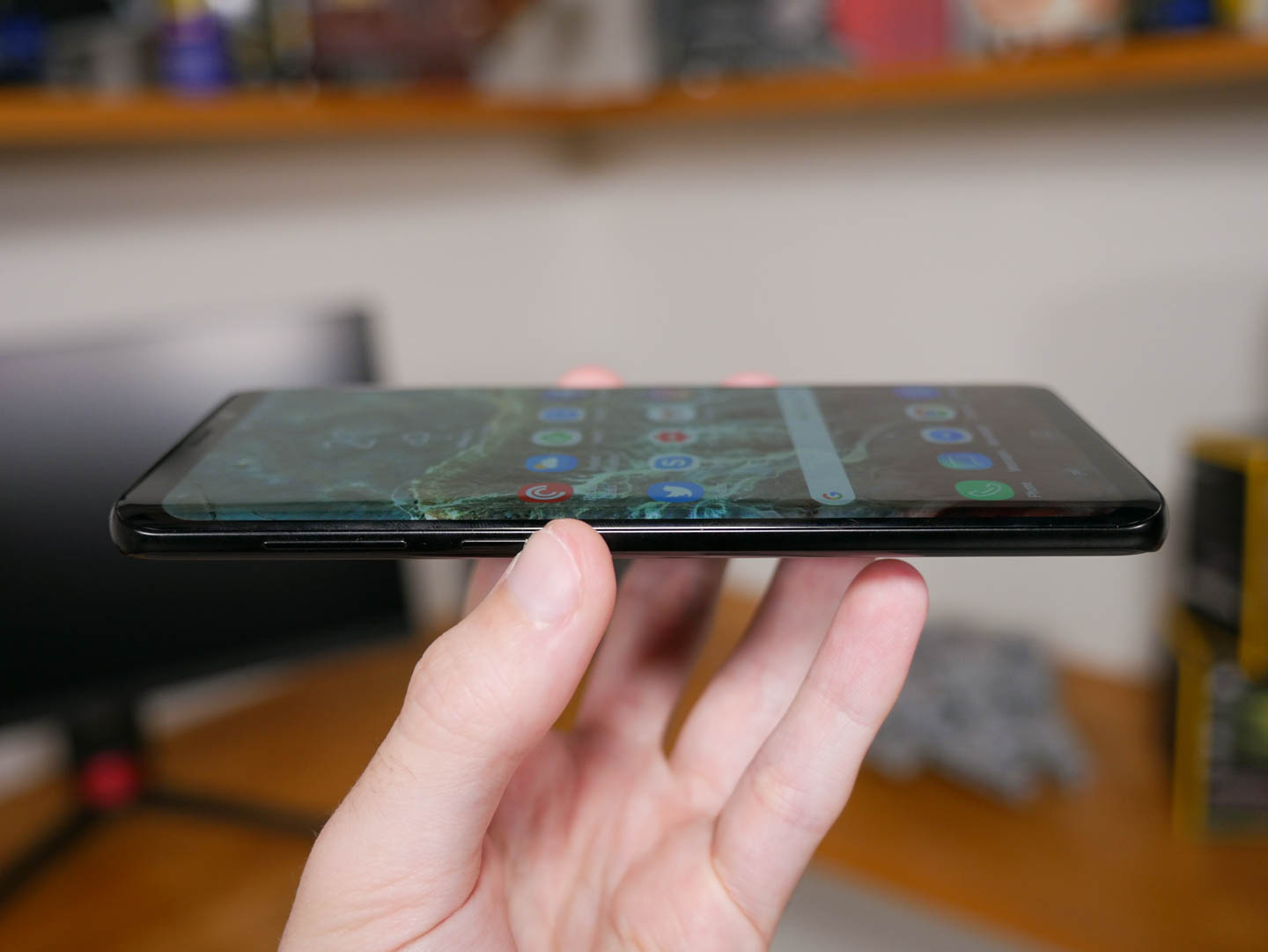
Such big drinking glass panels pb to the same durability concerns I had with the Galaxy S8 line, particularly due to the curved edges that betrayal the glass when dropped. The Galaxy S8 was one of the most fragile phones I'd e'er seen: forums and social media are littered with complaints of relatively minor drops leading to shattered displays and expensive repair bills. I can't come across the Galaxy S9 being whatever unlike in this regard.
Unfortunately this ways I take to make the same recommendation as last time: the Galaxy S9+ requires a case. Most other phones I'm comfy using without protection, simply the Galaxy S9+ with its curved edges need additional protection to save yourself from the pain of a cracked screen. When you're spending almost a g dollars on this handset, you really don't want it to break from pocket-size incidents, and as Samsung's blueprint doesn't protect confronting this, you lot're left with no option just a case that unfortunately hides some of its beauty.
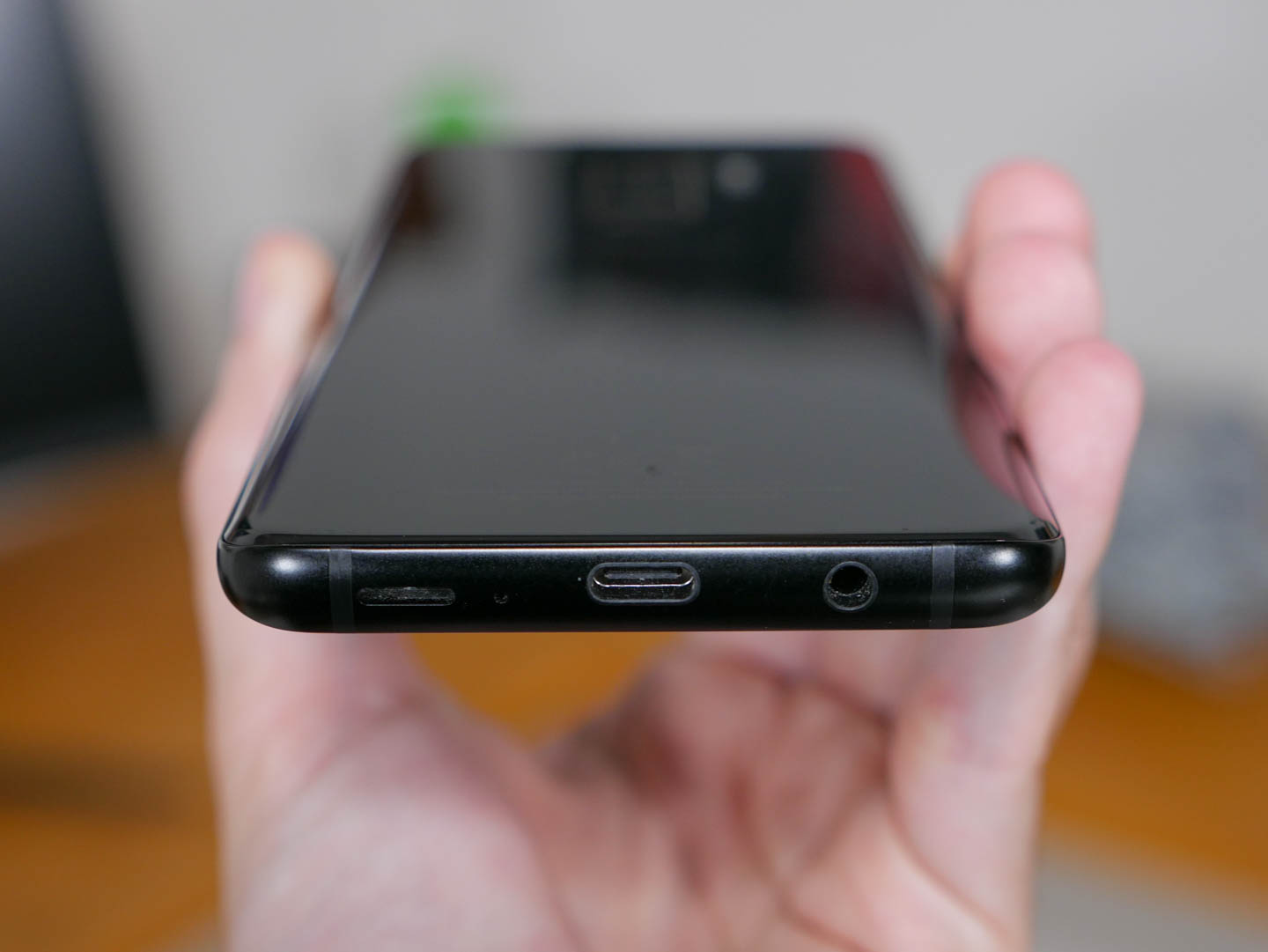
And while I'm at it, I may likewise point out the ports along the bottom edge are not properly aligned. This is a small nitpick, but on a premium handset that's otherwise well designed, it's disappointing to see a few alignment issues. On the other mitt, I'chiliad glad to see the utilise of both USB-C and a 3.5mm headphone jack. Samsung remains one of the few companies that haven't caved into removing the headphone jack.
Samsung has made a handful of meaningful design upgrades. The fingerprint sensor on the rear is now in a sensible location beneath the camera: you lot won't smudge the lens every time you lot attempt and utilize it now. There'south also facial recognition that uses a combination of the iris scanner and forepart facing camera, which is not bad to have merely not as fast as the fingerprint scanner. Face unlock needs to be every bit fast and accurate as Face ID or Windows Hello to go far worth using; the Milky way S9+ is non quite there even so.
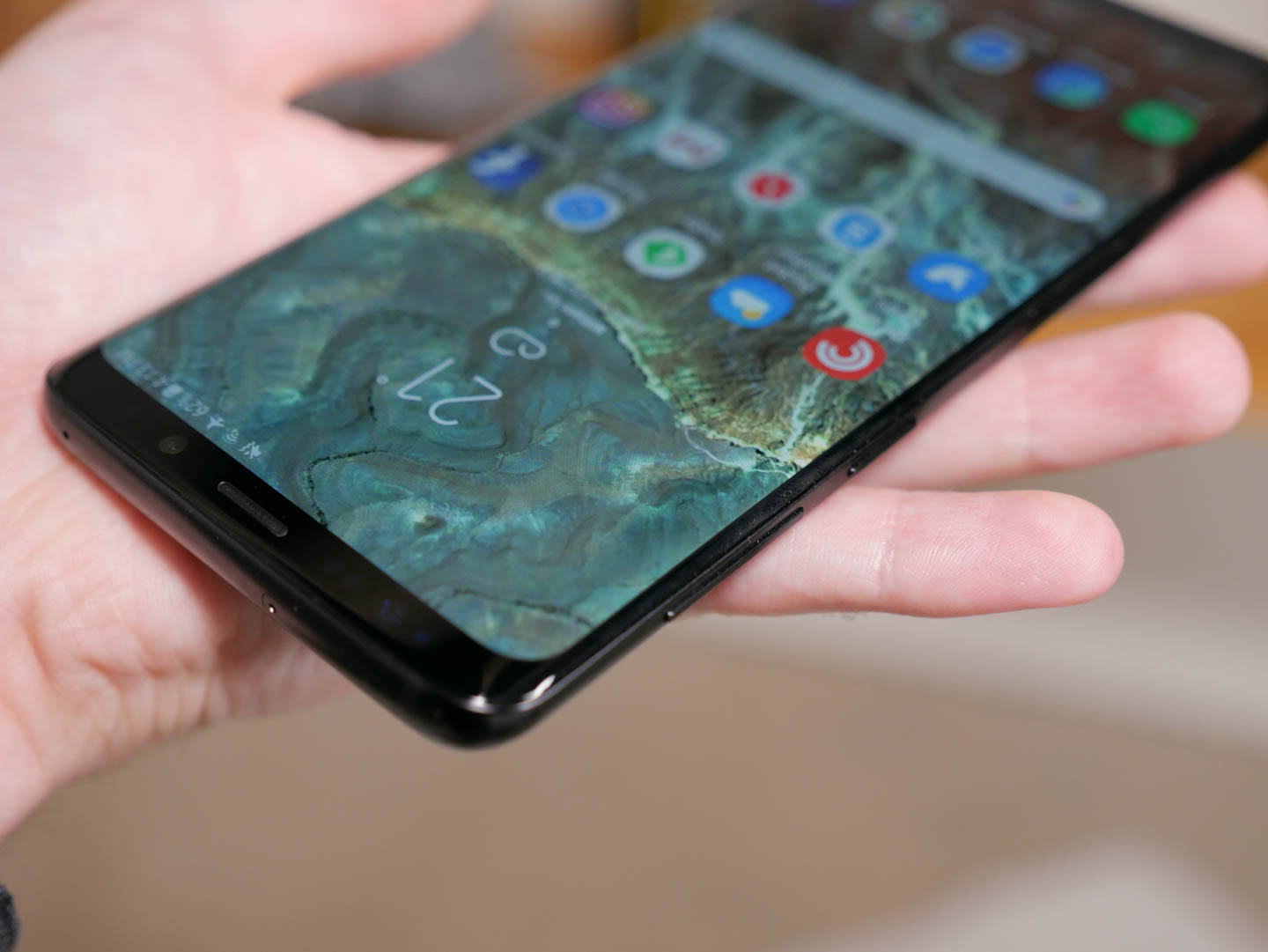
The other major change is the upgrade to stereo speakers, using a combination of a bottom firing driver and the smaller speaker to a higher place the display. These are some of the best sounding speakers I've used on a smartphone, with better clarity than a phone like the Pixel 2 XL, which has pretty decent front facing speakers. In that location is a slight balance issue with the Milky way S9+, as the bottom speaker provides more than bass than the top speaker, however it'due south not as noticeable equally I expected, even in a landscape orientation.
The ideal implementation is still dual front facing speakers, as information technology's still reasonably easy to block the bottom edge speaker when property the Galaxy S9+ in either orientation. That said, it's hard to go by the quality the Milky way S9+'south speaker solution provides.
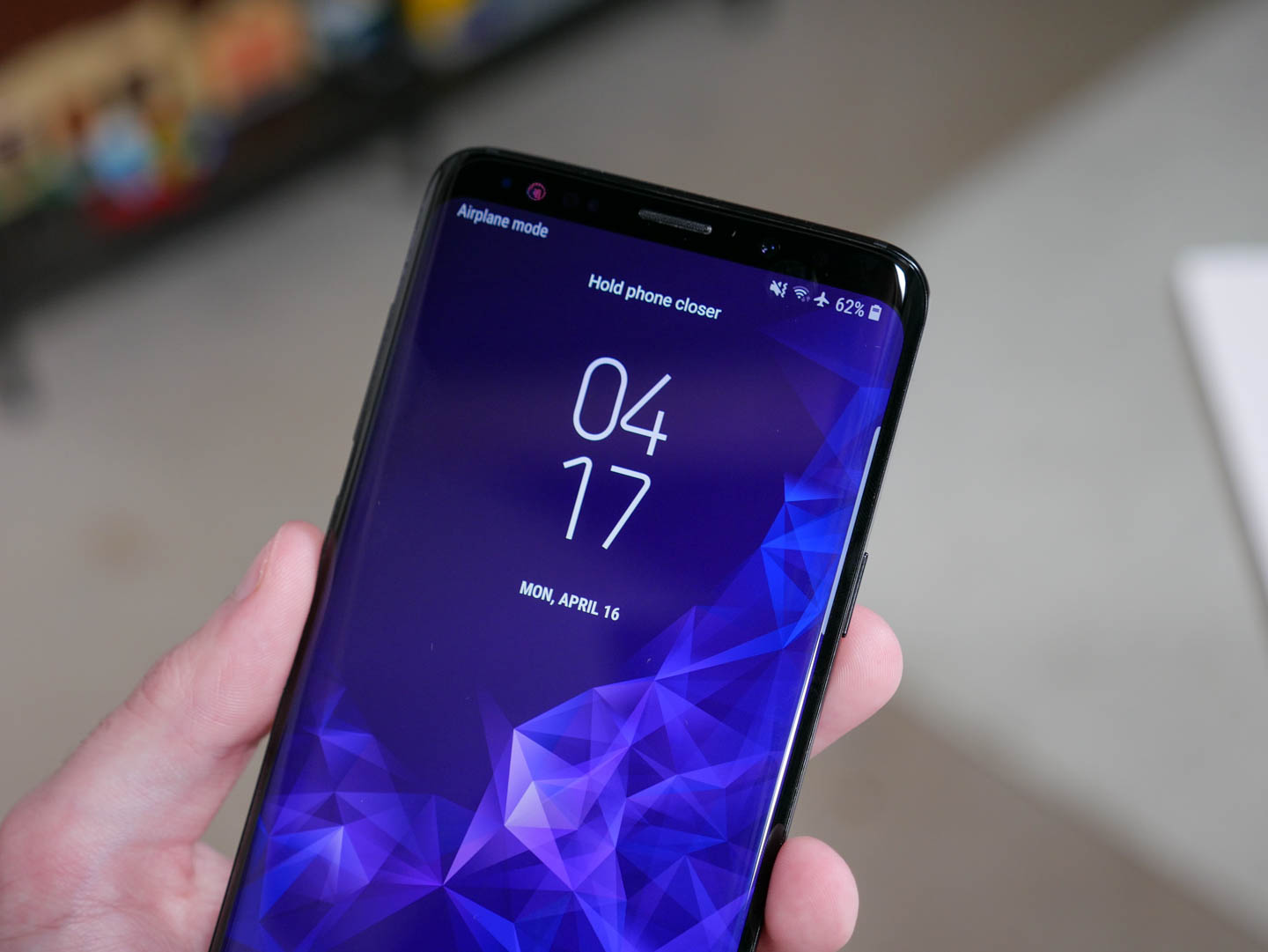
It'southward not bad to see Samsung standing to provide IP68 water resistance for submersion in upward to 1.5m of fresh water for 30 minutes, though you shouldn't use the phone in salt water. There's still a microSD menu slot to complement internal storage options (especially great when yous tin can add 128GB for a mere $40! take that iPhone owners) and in that location's too still a heart rate monitor for utilise with Samsung Health.
Unfortunately at that place's still a Bixby push that cannot be remapped in the stock software to annihilation useful, though it can be disabled. The corporeality of times I accidentally pressed the Bixby push button was quite high, so I'd rather this push either didn't exist, or could just be programmed to open whatever awarding I similar. Bixby is improving, just information technology's not skilful enough to warrant a defended hardware button on a space-limited smartphone.
Source: https://www.techspot.com/review/1611-samsung-galaxy-s9/
Posted by: nesmithgaid1960.blogspot.com


0 Response to "Samsung Galaxy S9+ Review"
Post a Comment